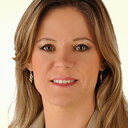Stenospermy and seed development in the "Brazilian seedless" variety of sugar apple (Annona squamosa).
Keywords
Abstract
Stenospermy was identified in naturally occurring sugar-apple (Annona squamosa) mutants with great potential for use in genetic improvement programs. However, to date, there have been no detailed studies of the development of aspermic fruit in this species. The aim of the present study was to characterize the anatomy of developing fruit in the 'Brazilian Seedless' mutant. Flower buds in pre-anthesis and developing fruits were subjected to common plant anatomy techniques. The abnormal ovules are unitegmic and orthotropic and have a long funiculus. There is evidence of fertilization, including the presence of embryos in early development and the proliferation of starch grains in the embryo sac. However, the embryos and embryo sac degenerate, although this does not affect pericarp development. Ovule abortion does not occur. The perisperm, which is formed from the peripheral layers of the nucellus, fills the cavity left by the embryo sac. The mature fruit contains numerous small sterile seeds with abundant perisperm and unlignified integument that is restricted to the micropylar region. The majority of perisperm cells are living and appear to be metabolically active in the periphery. Therefore, stenospermy leads to the formation of sterile seeds in A. squamosa, and the perisperm possibly play an important role in fruit development.




